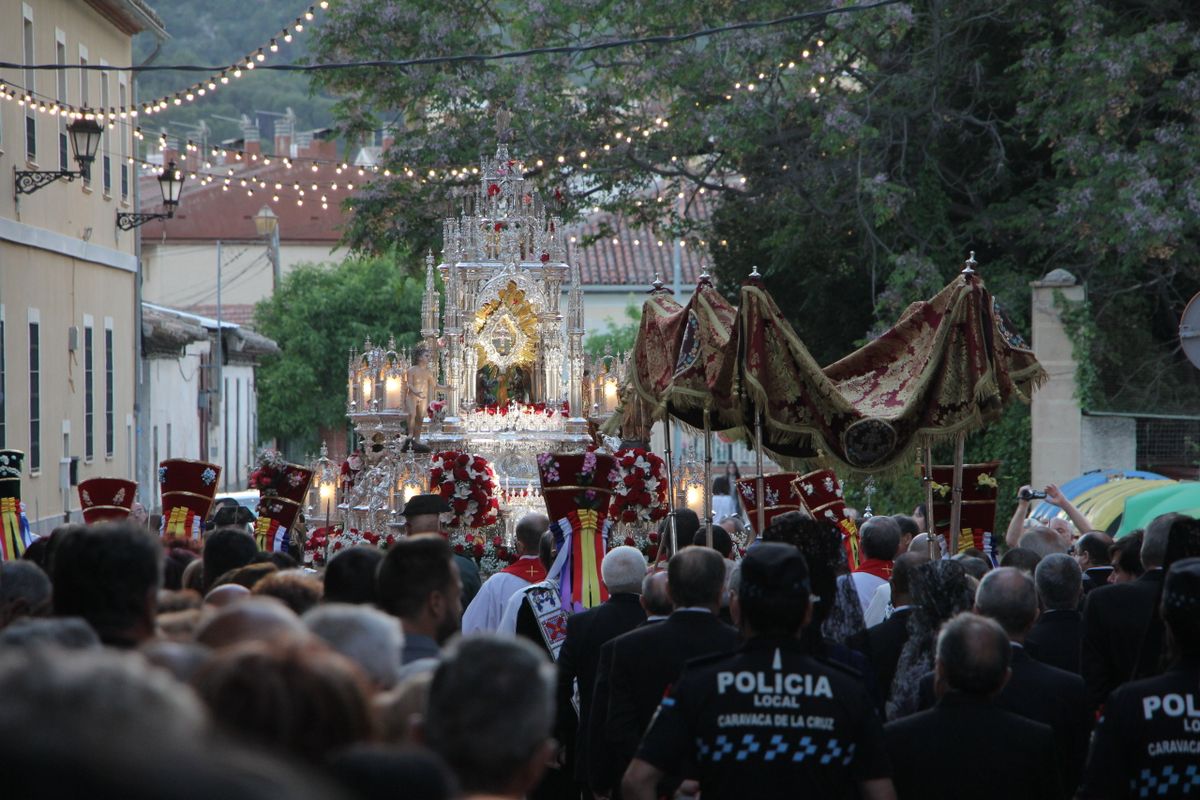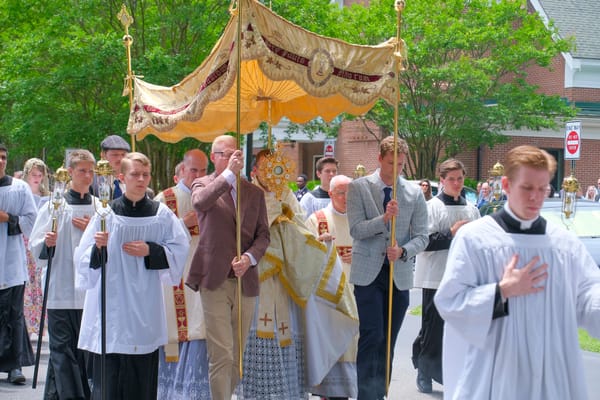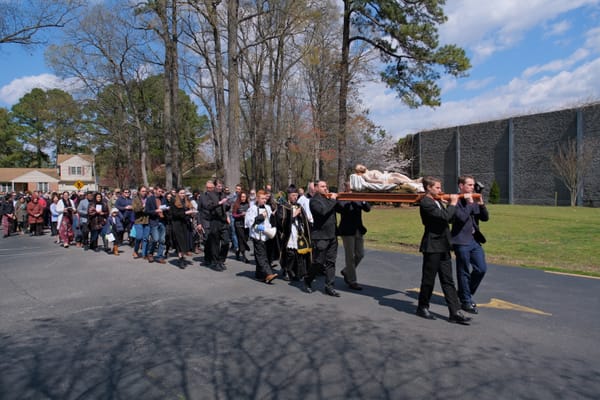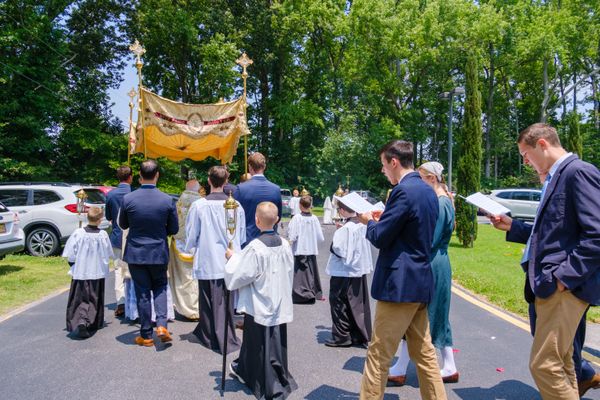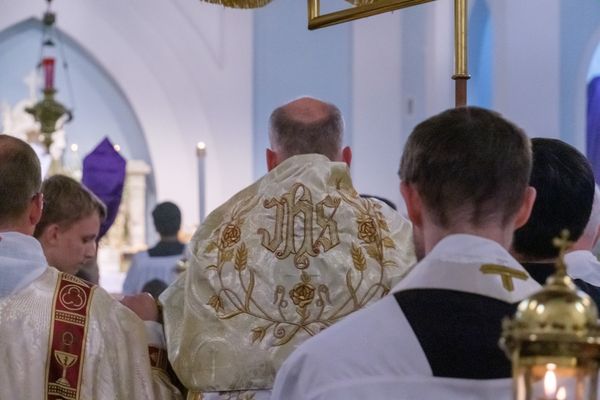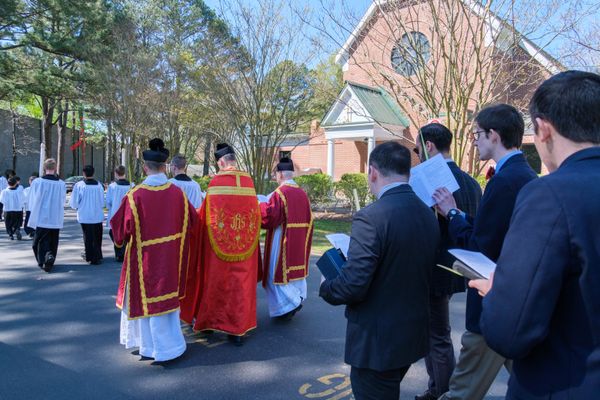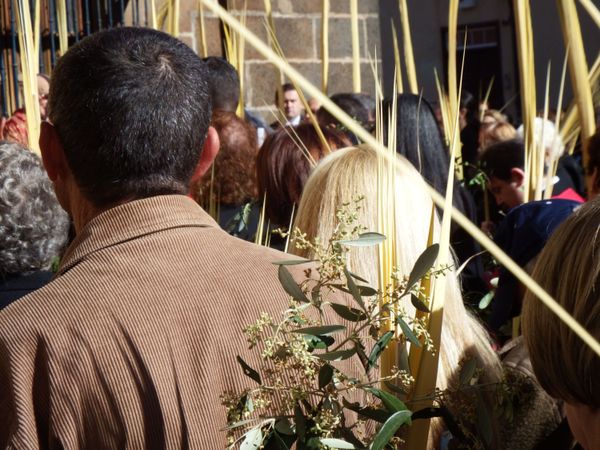Details
Legend of the Holy Cross and the May Festival.
In the early 8th century, Arabs and Berbers invaded the Iberian peninsula and occupied the territory. Starting a conflict with the local inhabitants that took almost 800 years to resolve, ending with the control of the Iberian peninsula by a coalition of the Christian kingdoms.
In about the middle of that period, in the year 1231 (or 1232 by some accounts), a miracle occurred in the southeastern Spanish town of Caravaca de la Cruz. The town is set among the rugged sierras of Murcia, which at that time was still a Moorish kingdom under Zeyt-Abuzeyt. Being several generations away from the initial invaders, Zeyt-Abuzeyt was from a line of well-established Moorish monarchs and one of his duties was to protect the region from invasion by the Christians. The Christian Reconquesta took various forms; from fighting to gradual infiltration through missionaries. One such Christian missionary was Don Gínes Pérez Chirinos de Cuenca. He was captured and taken before the Muslim king, who was curious about certain aspects of the Christian faith. In particular, he was interested in the Christian celebration of the Last Supper and asked the missionary to demonstrate the procedure. One can imagine the priest would be reluctant to do this – in those days only believers were present during the sacrament. Nevertheless he agreed, and the king arranged for the necessary apparatus: an altar draped with a pall cloth, bread and wine, and some candles. One important element, however, was missing: the cross. The missionary explained that the presence of a cross was critical to the Eucharist and he could not continue without one. The king exclaimed: "So what is that?", pointing to something at the window. From the heavens, two angels appeared carrying a cross, which they placed on the altar and then disappeared.
The priest continued with the Mass. According to Catholic belief, when the bread and wine are consecrated during Mass, they cease to be bread and wine, and become instead the body and blood of Christ. The empirical appearances are not changed, but the reality is. When missionary Don reached the consecration stage, the king saw a beautiful baby instead of the bread (Host). The king was so taken aback by this miraculous image that he and his family converted to Christianity and asked to be baptized into the Christian faith. Many believe that the cross delivered by the angels included a piece of the True Cross.
This appearance of the Cross is remembered by the people of Caravaca each year in acts that constitute a real festive tradition supported by a legend with historical foundation recalled from the Middle Ages. Indeed, the May festivities in honor of the Blessed and Vera Cruz are a perfect combination of color, culture, religion and entertainment in which all citizens participate unconditionally, inviting visitors to share the celebrations. More than just a holiday, the fiestas of Moors and Christians of Caravaca are a cult of the past, a tribute to history.


